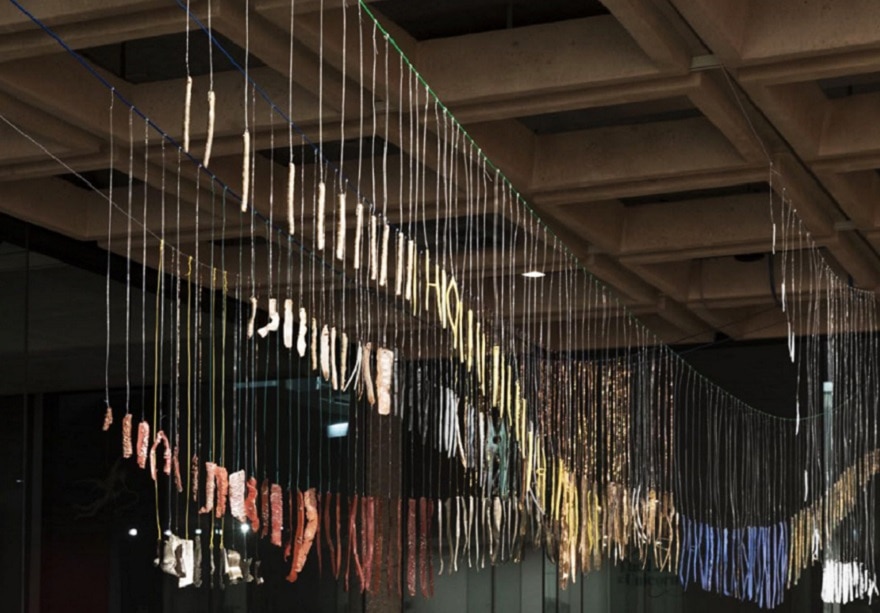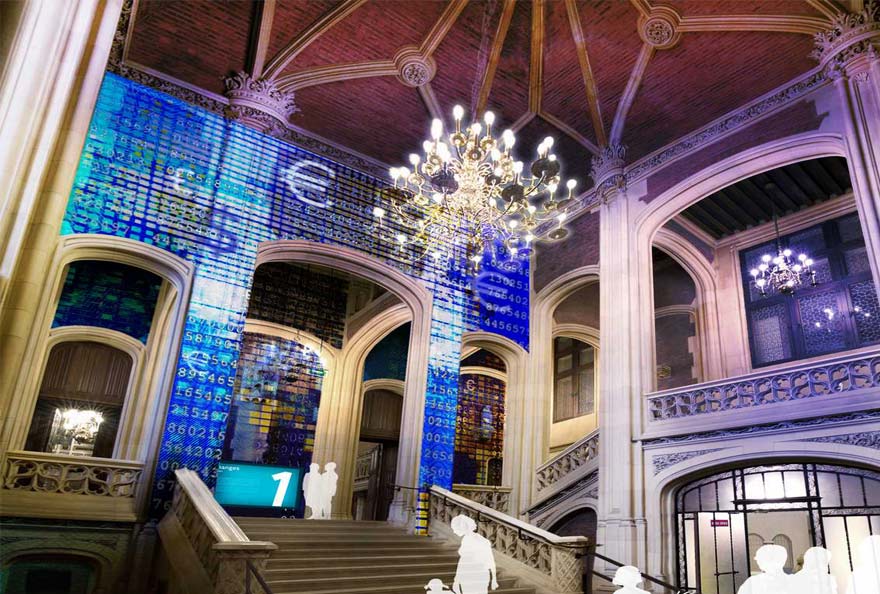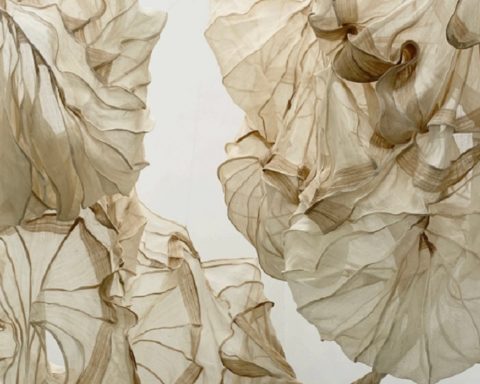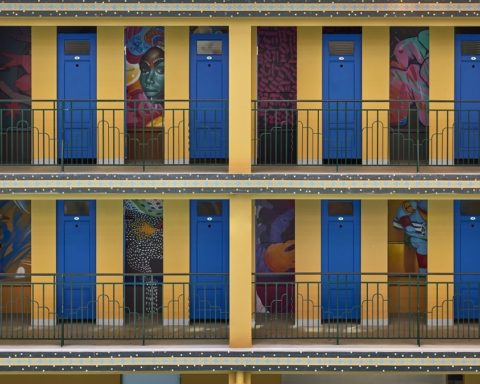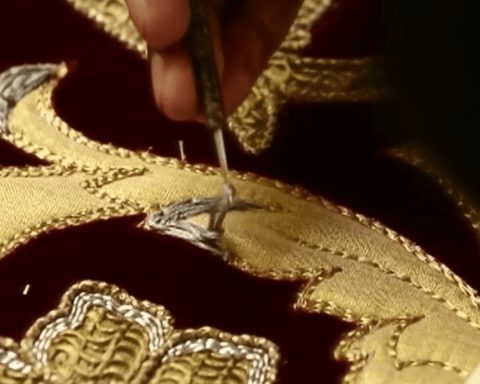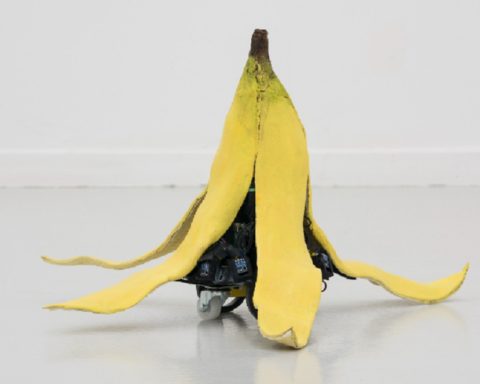L’optimisme de Matisse, c’est le cadeau qu’il fait à notre monde malade, l’exemple à ceux-là donné qui se complaisent dans le tourment.Louis Aragon » (1)

Notre maison a décidé de faire perdurer et promouvoir l’œuvre de notre aïeul Henri Matisse, peintre majeur du XXème siècle, en soutenant l’expression d’une interprétation en trois dimensions de son œuvre, guidée par ses valeurs émotionnelles et picturales. Loin d’une transcription littérale, il s’agit, tant pour les designers que pour les artisans d’art (les créateurs du XXIème siècle) que nous avons choisis, de prolonger sa singularité, son univers optimiste, joyeux et apaisant, avec toute l’exigence et la créativité requises. Le fondement de cette démarche est guidé par la volonté d’une interprétation respectueuse des valeurs personnelles et de l’univers artistique d’Henri Matisse. La mission de notre Maison est de faire partager universellement l’émotion très particulière attachée à des objets sensibles qui transmettent le regard vivifiant, poétique et singulier de notre arrière-grand-père. C’est pour nous l’occasion de donner à voir et à revoir la force d’inspiration contenue dans son œuvre, et nous l’espérons, de vous proposer une nouvelle lecture des tableaux auxquels chacun de ces objets se réfèrent. Nous souhaitons ainsi permettre à de nouvelles générations du monde entier de découvrir cette éternelle allégresse et d’en profiter, au quotidien de leur vie.Jean Matthieu Matisse »
Manifesto

Présentation de la collection en série limitée
Alessandro Mendini

Si je ferme les yeux et que je pense à Henri Matisse, le premier mot qui me vient à l’esprit est pureté, et le second lumière. Matisse est un esprit et un peintre pur, solaire et total. Pour moi, les éléments sur lesquels il travaille et fait jouer son imagination sont les feuilles des plantes dans leurs vases, les espaces domestiques avec leur mobilier et leurs objets, les femmes nues et habillées, le tout entrelacé au sein d’une spatialité décorative ornée d’arabesques. Tout rapport, toute empathie entre moi-même et le monde figuratif de ce grand personnage ne pouvait que partir d’un objet, et plus précisément d’un vase. Je dessine des vases depuis de nombreuses années, et j’en ai étudié les formes de l’Égypte ancienne à la Chine, à la Corée, à la Renaissance italienne, à la Sécession viennoise. Pour rendre hommage à Matisse, j’ai réfléchi à une forme complexe, sinueuse et organique, comme s’il s’agissait de feuilles conceptuelles – ici d’un souvenir quelque peu Liberty, et là avec d’importantes silhouettes tirées de la structure et de la géométrie de quelques-unes de ses peintures. Le système chromatique complexe élaboré par Matisse au fil du temps m’a incité à en sélectionner les teintes en analysant des détails de certains de ses travaux datant de différentes époques, de façon à obtenir une gamme susceptible de décliner des couleurs solaires et sombres, érotiques et naturelles, abstraites et concrètes. J’ai ainsi mis au point une palette de huit couleurs (plus le blanc et le noir). De manière analogue, j’ai défini trois stylèmes décoratifs superposés à la main. Les trois vases en céramique de ma collection se caractérisent par des dimensions progressives, chacun d’eux a sa propre forme, chacun utilise six des huit couleurs élaborées pour l’occasion (plus le blanc et le noir), cuites séparément, en une alternance de zones brillantes et de zones opaques. Dessins préparatoires d’Alessandro Mendini Texte d’inspiration Leur fabrication délicate a été confiée au maître artisan florentin Alessio Sarri, propriétaire d’un atelier riche en histoire dans le domaine de la céramique moderne. Alessandro Mendini »



L’une des choses que j’admire le plus dans le travail de Matisse est l’utilisation de la couleur si bien intégrée, si particulière, utilisée de manière magique. Elle reflète à la fois les traces de différentes cultures et le parcours dynamique et riche d’une vie unique. Son trait est une combinaison de précision et de capacité figurative. En étudiant ses peintures, on peut trouver une riche combinaison d’éléments notamment sa représentation de la nature combinée à des meubles imaginatifs et une utilisation d’objets provenant de cultures importantes pour lui. Henri Matisse utilise des figures solides ; le contraste des couleurs est magnifique. Le point le plus important que j’ai l’impression de partager avec Matisse est la passion pour la méditerranée : la nature, la mer, l’imagination et la capacité de rêver. Le choix et l’utilisation de bleus et d’oranges me rappellent les médinas, les fleurs d’oranger et les marchés d’Afrique du Nord. Des codes comme ceux-là me transportent dans une Méditerranée chargée de force et de magie. Je suis un fervent admirateur de son style et j’y ai toujours trouvé une véritable source d’inspiration. Avoir l’occasion de transposer l’inspiration que je trouve dans son travail dans ma cosmographie personnelle a été très enrichissant. Dessins préparatoires de Jaime Hayon Texte d’inspiration Le concept à l’origine de ces vases repose sur des éléments fantastiques : formes, silhouettes et références naturelles qui se confondent et flottent dans une mer de couleurs. La forme du vase lui-même est inspirée des références méditerranéennes et des éléments qui apparaissent dans l’œuvre de Matisse. Tradition et audace se rejoignent pour créer des lignes extérieures uniques et définies qui confèrent force et caractère au style et au concept du dessin. Jaime Hayon »


Cette série de vases retranscrit l’idée d’une fenêtre ouverte sur l’extérieur, un thème pictural souvent présent dans l’œuvre de Matisse. Pour reconstituer l’image d’une fenêtre au travers de laquelle on aperçoit un paysage, la terre cuite, l’aluminium anodisé et la céramique émaillée ont été associés dans une combinaison de trois formes.La plaque d’aluminium anodisée, vibrant à la lumière, devient un ciel azur. La margelle de la fenêtre prend la forme d’une brique en terre cuite. Un cylindre de céramique émaillée vient recevoir des fleurs fraiches. Cet assemblage de formes et de matières produit un ensemble vibrant, une scène d’intérieur ouverte sur un paysage de lumière éclatante.Ronan & Erwan Bouroullec »


